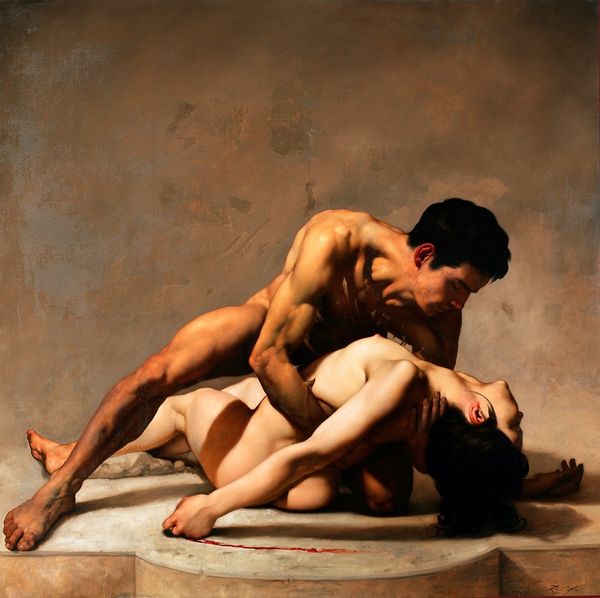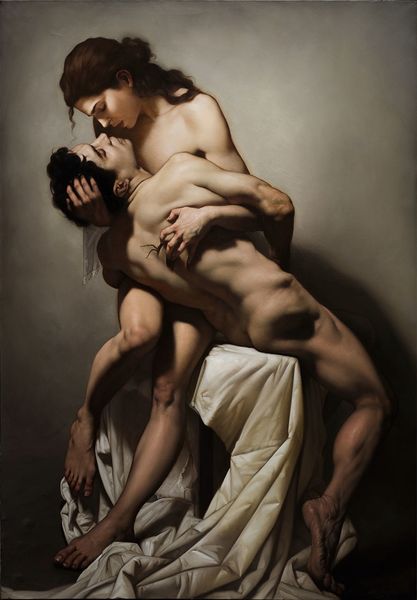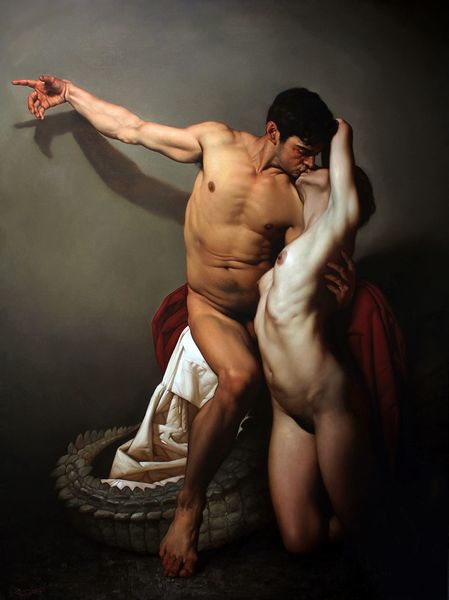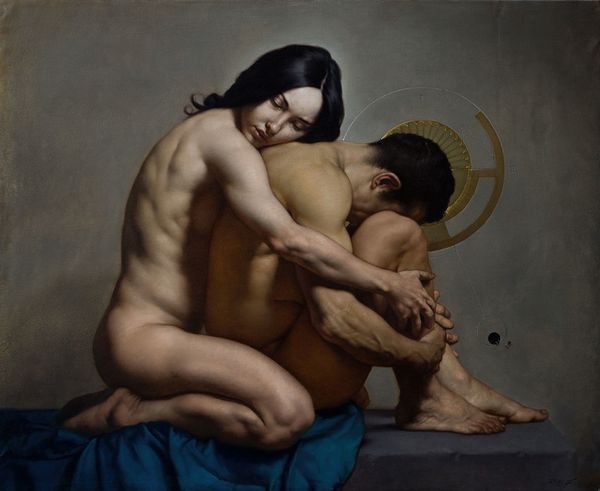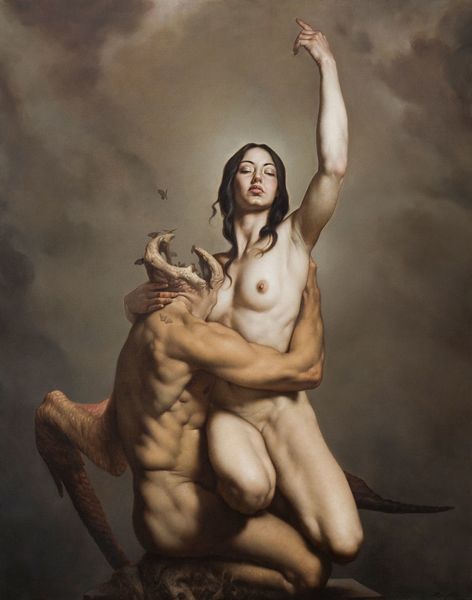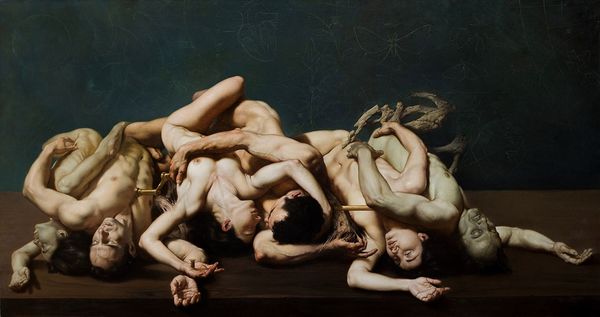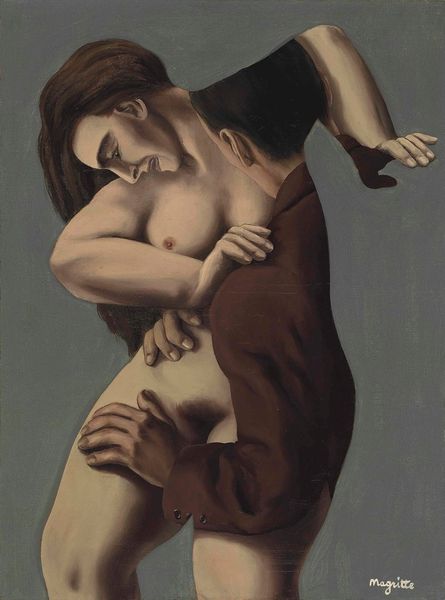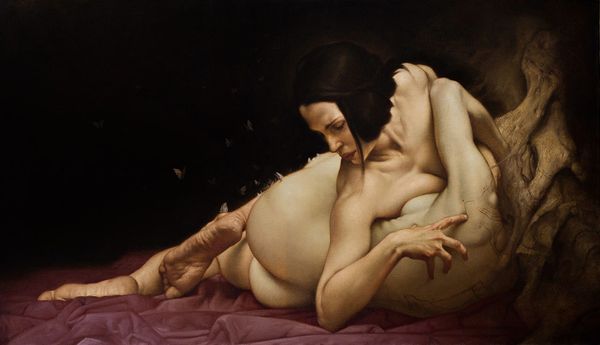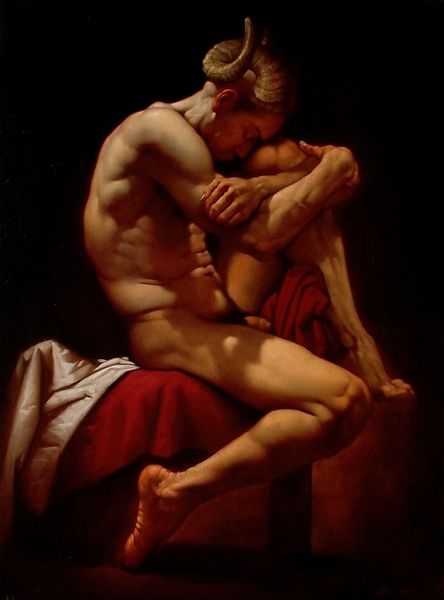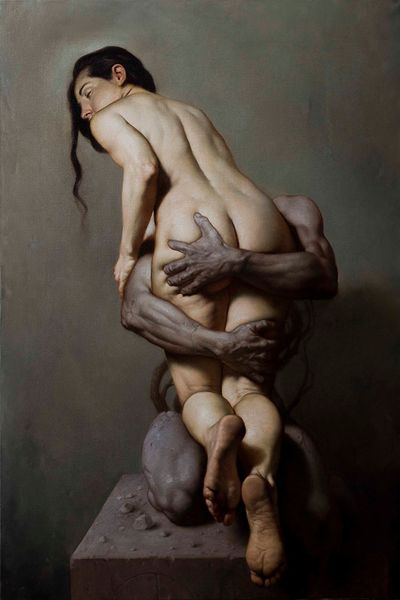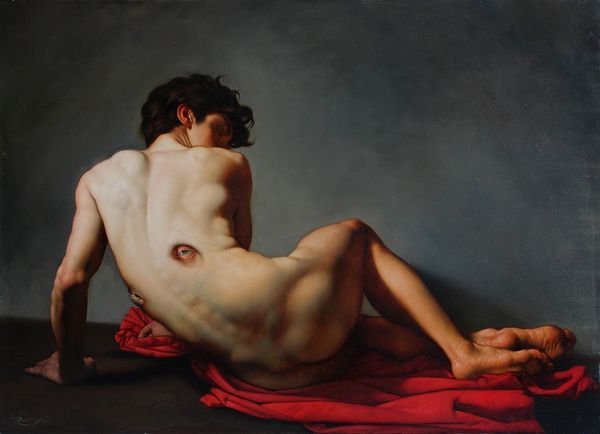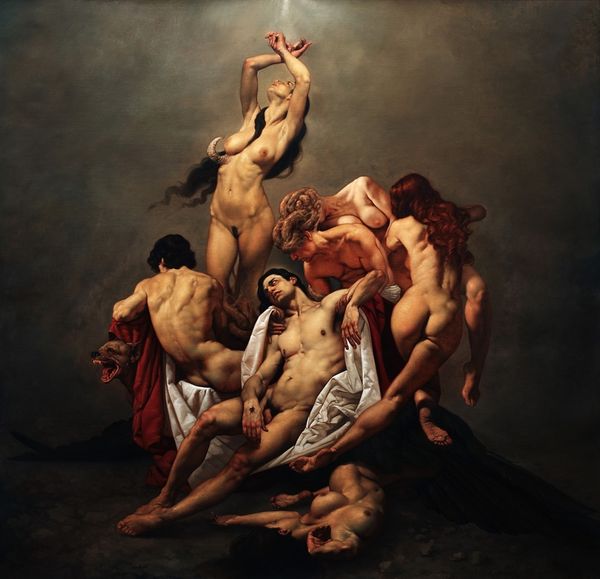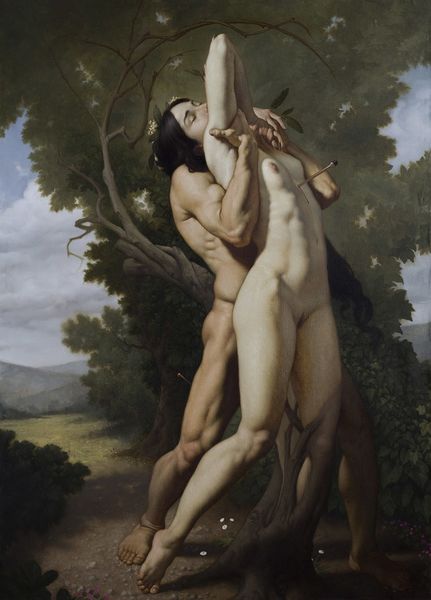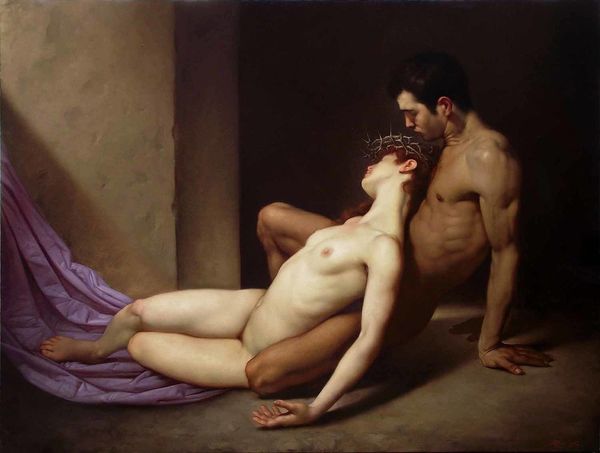
Copyright: Modern Artists: Artvee
Curator: This is Roberto Ferri's "Sogno Di Rugiada," created in 2020. At first glance, what strikes you about it? Editor: The sheer muscularity, undeniably. It's a ballet of weight and counterweight, of contrasting yet strangely complementary forms. The subdued palette lends the piece a gravity that echoes historical works, perhaps those of the Baroque era. Curator: Yes, Ferri often employs techniques reminiscent of the Baroque masters. Consider how the bodies are rendered. It highlights the artist's skillful application of oil paint to achieve a near-sculptural definition of the human form. What do you think about the process? Editor: Absolutely. I notice in Ferri’s use of glazing and layering techniques, how light subtly plays across their skin. This gives the figures volume, highlighting the material's capacity to evoke realistic textures and shapes. However, the almost surreal juxtaposition disrupts the familiar. Curator: Indeed, and looking beyond just what we see, to the social and economic contexts of its creation is essential. Ferri operates within a global art market that, while valuing individual skill, is deeply entwined with historical representations of the body, challenging and reshaping these classical notions for a modern audience. Editor: That said, there’s undeniable eroticism—a subtle charge—but also this element of religious symbolism, most evident with the female figure's halo. I'm very curious as to the meanings behind those signs... Curator: Consider that through "Sogno Di Rugiada," Ferri places his contemporary subjects within a dialogue with canonical artworks. The canvas becomes a site where tradition meets present-day anxieties, and the production itself mirrors art-historical lineage. Editor: Thank you for this context, I was indeed captivated by this dance of the present and the historical. This work exemplifies how form and material interplay in communicating tension, fragility, and physical strength. Curator: Ultimately, through studying this image we understand art as more than representation—instead an artifact imbued with traces of its time and the processes involved in its making. Editor: In all, this close looking provides rich insight—from purely visual interpretation to questions regarding how technique, influence and symbolic language shape the artist's practice and what their art ultimately conveys.
Comments
No comments
Be the first to comment and join the conversation on the ultimate creative platform.
